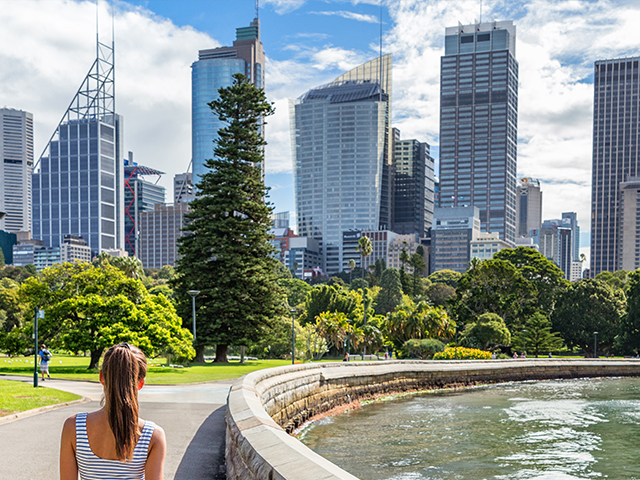LANDSCAPE ARCHITECTURE AND SUSTAINABILITY
24 Jun 2021
How Urban+ Fountains & Furniture’s mission to drive the circular economy can help reduce architectural product waste. Find out more.

The Australian construction industry is among the country’s biggest contributors to waste and emissions. According to the National Waste Policy 2018 report, the industry generated 20.4 megatonnes (MT) of waste from construction and demolition.[1] Between 2016-17, 6.7MT of construction and demolition waste went into landfills; almost a third of the total waste deposited in landfills during this period across all industries.[2] Going by 2019 estimates, construction waste is being generated at an even faster pace, increasing by 22 percent since 2016-17.[3]
This linear ‘take, make and waste’ approach has implications for the future of our planet. Earth is a finite resource – the more natural resources we extract and the more waste we generate, the closer we get to environmental disaster. As time is running out for us to avoid a climate catastrophe,[4] there is a need for a far-reaching transformation in how we approach the built environment to create a more sustainable future. 
Landscape design plays a critical role – parks, green spaces and community areas are an integral part of the social fabric, and often designed with sustainability in mind. These outdoor spaces enhance the beauty of the natural environment, the very thing at risk if we continue extracting, consuming and discarding resources at our current pace. Furthermore, landscape design is often a large component of major capital work, creating significant amounts of waste and emissions.
Because of this, conventional approaches to design need to be scrutinised. The majority of architectural products – from street furniture to the materials used to build public amenities – are derived from a largely linear process. We purchase products, use them for their useful lifecycle, then they are thrown away and sent to landfill. Soil contamination, excessive use of materials, unnecessary design features and extravagant use of heavy machinery also take their environmental toll.
It is time for council, designers and architects to adopt a new approach to design that keeps architectural products and materials in use for longer and retain their value. The circular economy may be the answer – a new model of economic development that focuses on reducing, reusing and recycling waste materials and creating sustainable landscapes that protect our finite resources and rebalance our ecological systems. 
Urban+ Fountains & Furniture is a company committed to driving the circular economy by incorporating sustainability into every function of their operations. From crafting products that are built to last, offering a drinking fountain restoration service, providing sustainable ownership options and campaigning for the reduction of single-use plastic bottles, Urban+ can help you incorporate sustainability into your current or future projects.
The above is an excerpt from Urban+ Fountain & Furniture’s new whitepaper – Designing Out Waste – Using the Circular Economy to Build Sustainability in Landscape Architecture.
Contact Urban+ Fountains & Furniture via the links below to find out more.
[1] Australian Government. “National Waste Policy 2018.” Department of Agriculture, Water and the Environment.http://www.environment.gov.au/system/files/resources/d523f4e9-d958-466b-9fd1-3b7d6283f006/files/national-waste-policy-2018.pdf (accessed 28 February 2021).
[2] Ibid.
[3] Australian Bureau of Statistics. “Waste Account, Australia, Experimental Estimates.” ABS.
https://www.abs.gov.au/statistics/environment/environmental-management/waste-account-australia-experimental-estimates/latest-release (accessed 28 February 2021).
[4] Watts, Jonathan. “We have 12 years to limit climate change catastrophe, warns UN.” The Guardian.
https://www.theguardian.com/environment/2018/oct/08/global-warming-must-not-exceed-15c-warns-landmark-un-report (accessed 28 February 2021).







